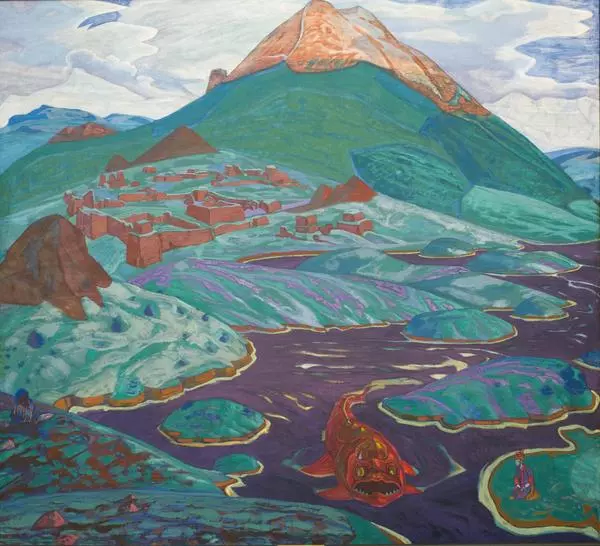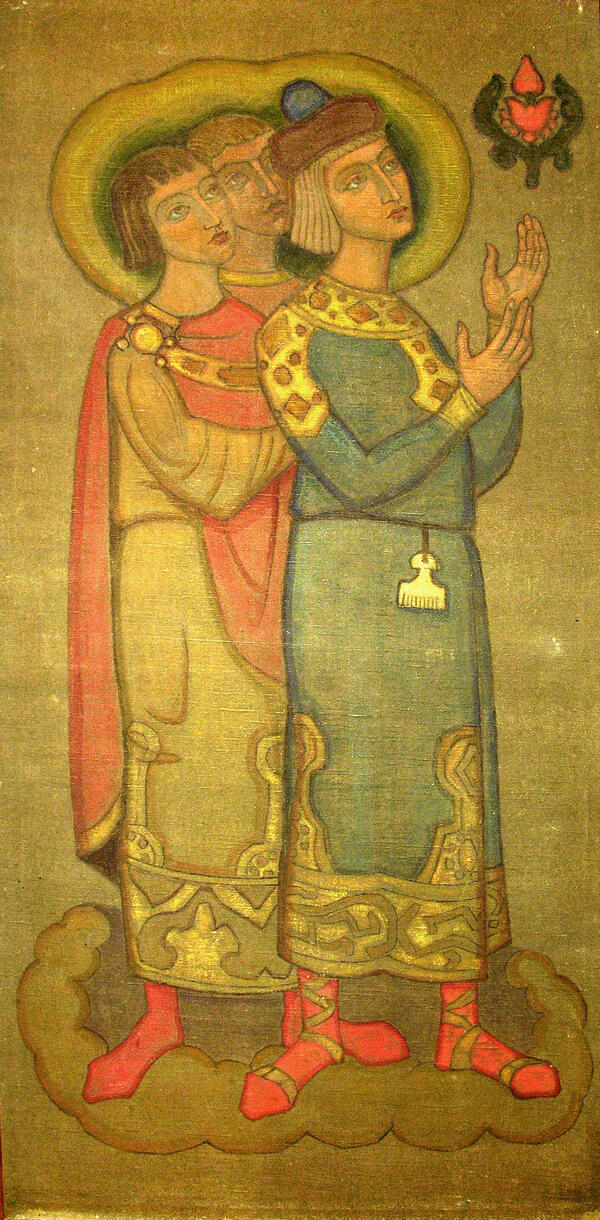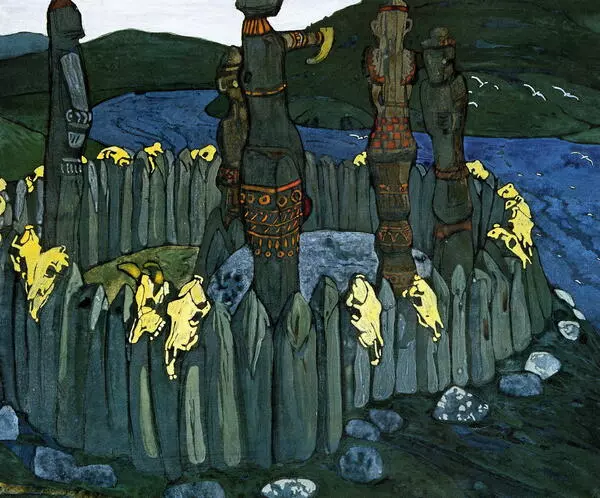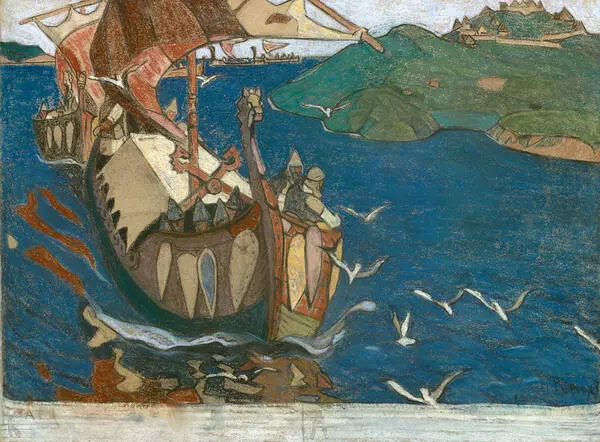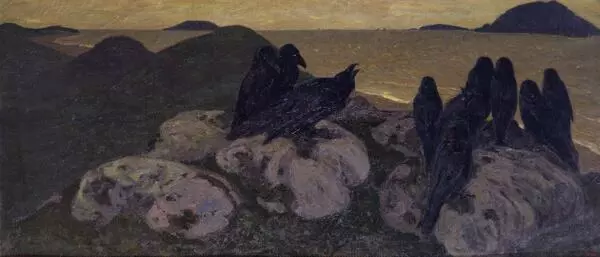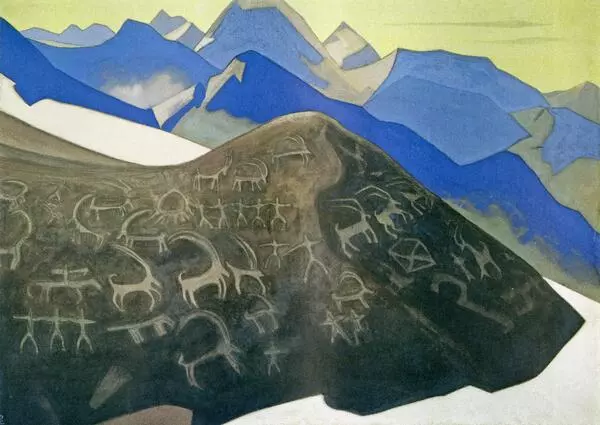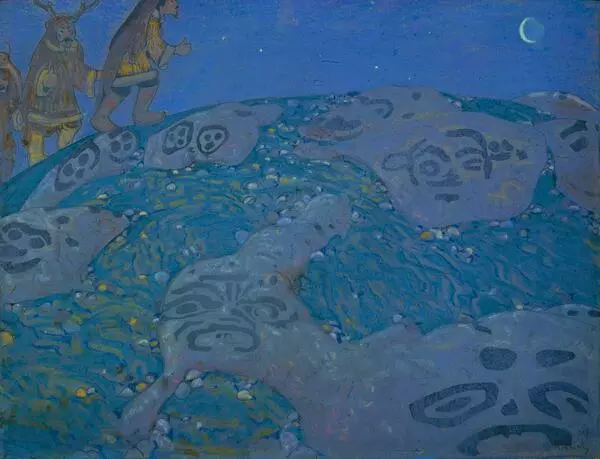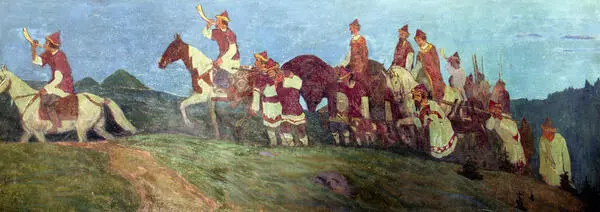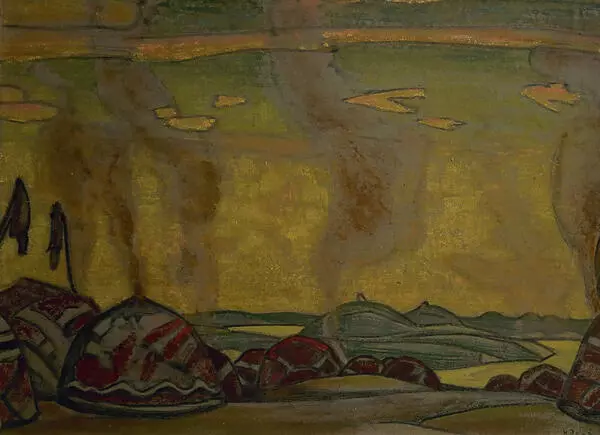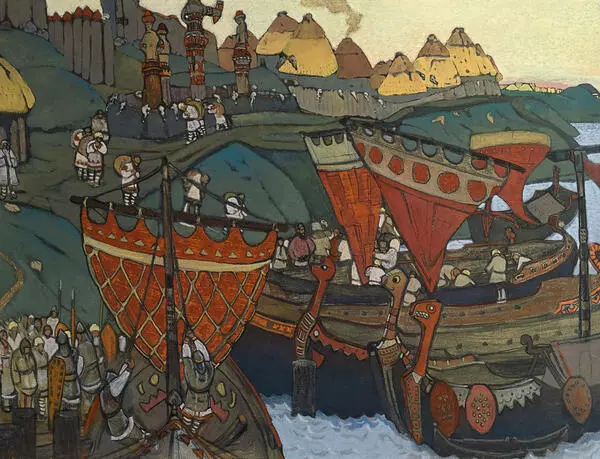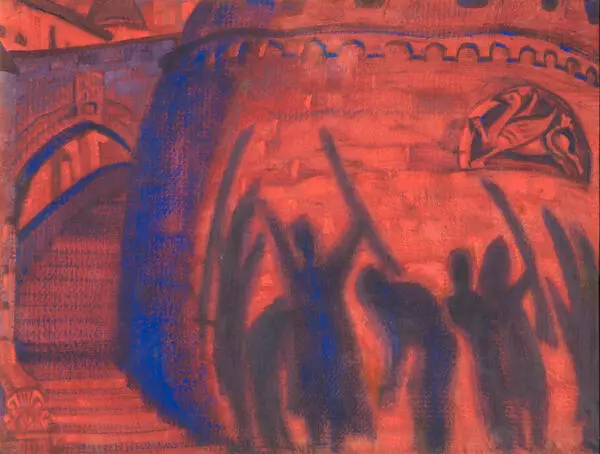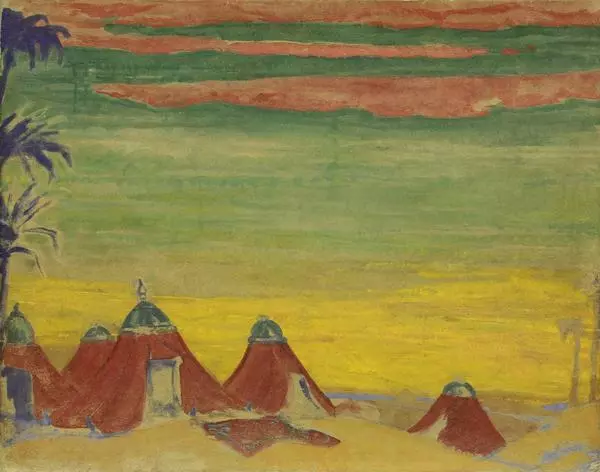‘BEda the Preacher’ is one of the most famous paintings by NIcholas Roerich /ˈrɛrɪk/. It is rightly considered a gem of the Novosibirsk Art Collection. The East was the main theme for the artist during the creation of this artwork. He studied historical monuments and based his artworks on ancient myths and legends as well as worked on the founding principles of his own spiritual teachings. It is no coincidence that Roerich, a philosopher and mystic by nature, was interested in theologian and historian Beda, who was a real historical figure.
The plot of the paintings refers to a poem by YAkov PolOnsky, a 19th-century Russian poet. (‘It was evening; in clothes wrinkled by the winds, blind Beda walked the desert path…’). The poem is about a wandering elder who is led by a tired guide boy. Blind Beda stops to preach amid deserted cliffs, though there is no one around. The boy does not understand why the elder has faith, and in the end, he hears the stones ‘rumble in response.’ The notion of animacy of nature was fundamental to Roerich’s art and spiritual quest. “Beda the Preacher” demonstrates it well.
The artwork has many features characteristic of Roerich’s paintings. The first thing to notice is the combination of Eastern authenticity and ancient Russian art—the most common stylistic combination in the late works of the artist. That said, the artwork seeks to look into the very essence of the character’s mind. Using tempera allowed Roerich to make the artwork look like an icon, giving it a solemn gloom.
The main motif of the work is the elder’s spiritual greatness, his ability to rouse mountains with the power of words. The artist emphasizes the ethical message of his work using tense dramatic colors. We see an abundance of crimson and raspberry hues, curved silhouettes of stones bowing before the breacher. The artist was convinced that ‘by increasing the spiritual culture of the masses, it is possible to transform life on earth.’ He perceived art as a life-giving force and actively communicated this idea to his works.
The plot of the paintings refers to a poem by YAkov PolOnsky, a 19th-century Russian poet. (‘It was evening; in clothes wrinkled by the winds, blind Beda walked the desert path…’). The poem is about a wandering elder who is led by a tired guide boy. Blind Beda stops to preach amid deserted cliffs, though there is no one around. The boy does not understand why the elder has faith, and in the end, he hears the stones ‘rumble in response.’ The notion of animacy of nature was fundamental to Roerich’s art and spiritual quest. “Beda the Preacher” demonstrates it well.
The artwork has many features characteristic of Roerich’s paintings. The first thing to notice is the combination of Eastern authenticity and ancient Russian art—the most common stylistic combination in the late works of the artist. That said, the artwork seeks to look into the very essence of the character’s mind. Using tempera allowed Roerich to make the artwork look like an icon, giving it a solemn gloom.
The main motif of the work is the elder’s spiritual greatness, his ability to rouse mountains with the power of words. The artist emphasizes the ethical message of his work using tense dramatic colors. We see an abundance of crimson and raspberry hues, curved silhouettes of stones bowing before the breacher. The artist was convinced that ‘by increasing the spiritual culture of the masses, it is possible to transform life on earth.’ He perceived art as a life-giving force and actively communicated this idea to his works.


